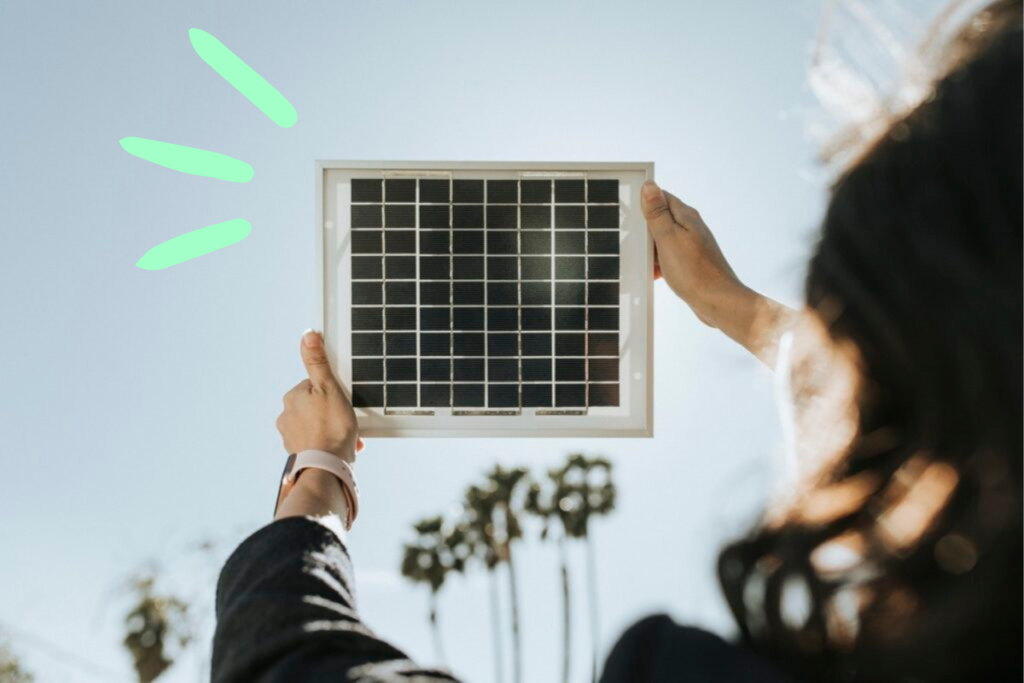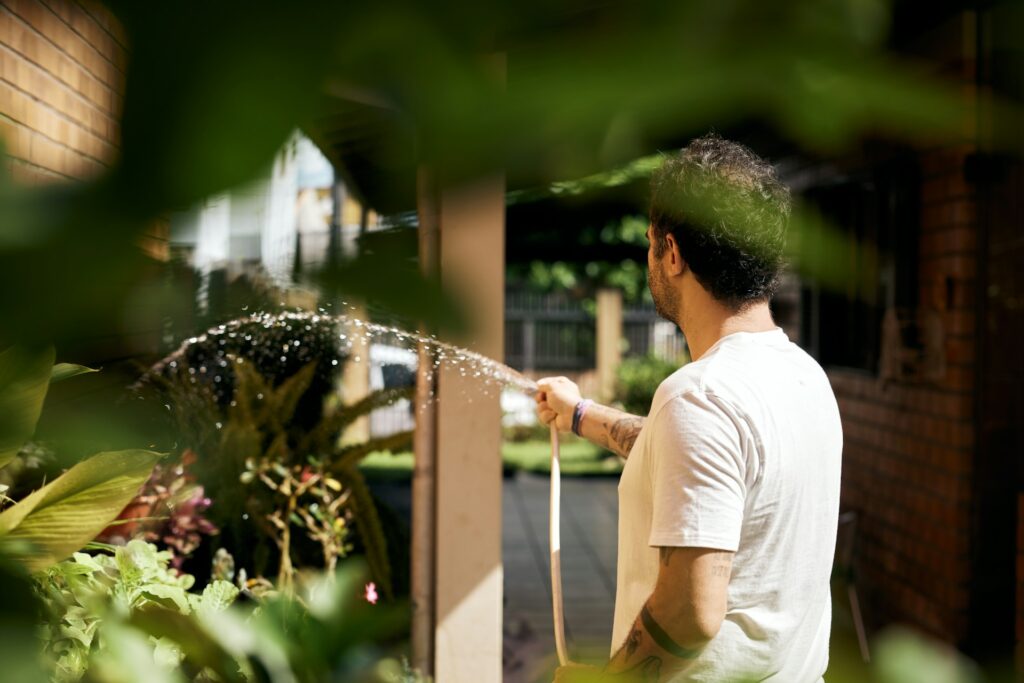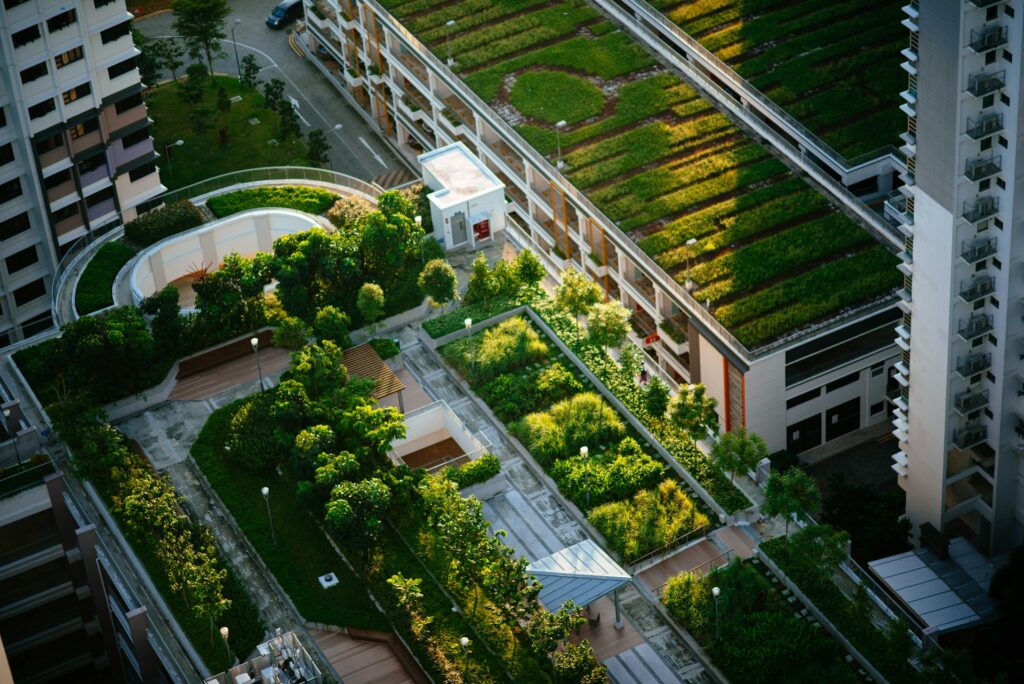Though it might not feel much like it right now, with the UK going through its usual December drop in temperature, there’s no denying that (cue Bo Burnham voice) the planet’s heating up.
Indeed, sustainability is a hot (hmm) topic, and whilst the average Joe can feel pretty helpless in the face of powerful global forces, learning how to make small changes to the home can ease a little of the climate guilt, if nothing else.
Living sustainably doesn’t have to mean living without all the comforts of modern life – with just a few thoughtful tweaks, you could save money on bills too! Let’s look at some of the best things you can do right now if you want to start leading a greener lifestyle.
From energy-efficient appliances to better insulation, here are 11 additions to help your home to make it more sustainable.
Installing Solar Panels & Inverters
Adding solar panels to your home is a great way to make it more sustainable.
Solar energy from the sun can provide electricity for lighting, appliances and other electronics in your home. It also helps reduce greenhouse gas emissions from traditional energy sources such as oil or coal.
Additionally, becoming energy independent can be a great way to save on energy bills. As grid energy prices can be unpredictable, installing solar panels gives you a steady stream of energy that isn’t reliant on external sources.
To maximise the efficiency of your solar panels, consider installing a solar inverter. Solar inverters convert the direct current (DC) electricity generated by your solar panels into alternating current (AC) electricity, which can be used to power your home. This ensures that the energy harnessed from the sun is effectively utilised.
With all these benefits, switching to solar power could save you money while helping protect our environment.

Introducing Solar Tiles
If you’re looking for all of the benefits of solar panels without the look of solar panelling, solar tiles may be the way to go.
Solar tiles replace your roofing and mimic the look of traditional materials such as shingles – they are designed to be energy-efficient whilst looking attractive on your property. Solar tiles are a popular choice for new builds or buildings in residential areas where solar panels might stand out too much amongst neighbouring homes.
If you’re looking for an effective way to lower your carbon footprint whilst not changing the visual outlook of your home too much, solar tiles are a great option!
Air-to-Water Heat Pumps
An air-to-water heat pump is a brilliant way to make your home more sustainable whilst reducing your reliance on traditional gas boilers. These clever systems work by extracting heat from the outside air and transferring it to your home’s water heating system – even when temperatures outside are quite low!
The heat pump operates rather like a refrigerator in reverse, using electricity to power a compressor that concentrates ambient heat from the air. This can then be used for both your domestic hot water and central heating needs. Whilst the initial installation costs may be higher than a conventional boiler, air-to-water heat pumps are incredibly efficient, typically producing three to four times more heat energy than the electrical energy they consume.
Not only do these systems help reduce your carbon footprint, but they can also lead to significant savings on your energy bills, especially when paired with other sustainable improvements like solar panels or improved insulation. As the UK moves towards net-zero targets, installing an air-to-water heat pump could be a savvy investment for future-proofing your home’s heating system.

Wind Turbines
Another addition to consider for a more sustainable home is wind turbines.
At the residential level, small-scale turbines are typically mounted on rooftops or free-standing poles, allowing homeowners to generate electricity directly from the wind.
By harnessing gusts of airflow, these systems can produce up to enough energy to completely offset household electricity use — sometimes even providing surplus electricity back into the grid!
This reduces reliance on fossil fuels and helps reduce overall carbon emissions since no combustion is involved in its generation process. Plus, with their sleek designs, modern turbines often add aesthetic appeal and environmental value to any property.
Water-Saving Fixtures & Features
Installing water-saving fixtures is one of the best ways to make your home more sustainable. This includes low-flow faucets, aerators, showerheads, and toilets indoors, and a change in watering habits outdoors, too.
Low-flow faucets reduce the amount of water used during hand-washing or cleaning dishes. Aerators are small devices that attach to existing faucets to mix air with water to conserve it while still maintaining adequate pressure.
Water-saving shower heads use less water than traditional ones, providing a strong stream to clean quickly. Specialist water-saving toilets boast improved flushing power and efficient designs that save money and resources.
Homeowners can significantly decrease their water consumption by investing in these eco-friendly products. And since they don’t require any major changes like rerouting plumbing systems or tearing down walls, installation is quick and easy – not to mention cost-effective!

Energy-Efficient Appliances
Moving on, energy-efficient appliances can help make your home more sustainable. These appliances use less electricity compared to standard models or antiquated energy sucking appliances, which helps reduce greenhouse gas emissions while saving you money on utility bills.
Energy-efficient appliances might be slightly more expensive than standard products. However, over time these investments will pay off in terms of reduced operating costs and improved environmental performance.
One of the most popular energy-efficient additions is also the smallest; energy-efficient light bulbs, such as LED bulbs. These are incredibly easy to find and install and help to reduce energy waste when lighting your home.
Rainwater Harvesting System
Rainwater harvesting systems are an excellent way to make your home more sustainable. These systems capture otherwise lost rainwater and store it for later use in the garden, for cleaning or other purposes.
The components of a rainwater harvesting system include gutters, downspouts, storage tanks, filters and pumps. Gutters collect water from the roof and direct it through downspouts into a storage tank or directly onto the ground.
The tank size should be determined based on how much water will be needed when there is no rainfall. Filters can also clean out any debris before it enters the tank. Pumps may also need to be installed if you plan to irrigate with stored rainwater or use it indoors and outdoors.
With its low cost and easy installation process, adding a rainwater harvesting system to your home effectively reduces utility bills while becoming more self-sufficient and environmentally friendly.

Composting System
Continuing from the discussion of rainwater harvesting systems, installing a composting system is another way to make your home more sustainable.
Composting involves collecting and decomposing organic matter into plant nutrient-rich fertiliser, such as kitchen waste, garden trimmings, or manure. Its primary benefit is that it reduces the amount of household waste sent to landfills and turns it into something useful instead.
Composting can also benefit energy savings since it eliminates the need for chemical fertilisers, which require significant energy inputs for their production and transport.
Additionally, composts are full of nutrients like nitrogen and phosphorus, essential for healthy plant growth; this makes them an excellent resource for gardens and lawns. Finally, having a compost bin in your garden will attract helpful organisms like earthworms and other insects, which can help keep pests away naturally without needing pesticides or herbicides.
Read: 10 ways to make your garden more wildlife friendly

Energy-Efficient Windows
Energy-efficient windows are an important addition to a more sustainable home. These windows can reduce the heat lost from your house in winter and keep it cooler in summer by blocking much of the sun’s radiation.
Not only do they help with insulation, but they also use less energy to maintain temperatures within the house than other window styles.
Read: 6 obvious signs that your home needs new windows
Insulation
Adding insulation to your home is a great way to increase its sustainability. The improved insulation will help keep the temperature inside more stable, which means less energy needs to be used for heating and cooling. You could consider insulation such as:
- Weather stripping around windows and doors
- Door sweeps on exterior entryways
- Caulk or spray foam where there may be gaps in walls
- Additional attic insulation
By taking these steps, you will notice a difference in how comfortable your home feels and how much money you save by reducing your energy bills each month!

Green Roofs
A green roof, also known as a living roof, is an excellent addition to make your home more sustainable. Green roofs are covered with vegetation and soil, which provide numerous environmental benefits. They help to insulate your home, reducing the need for heating and cooling, and can also absorb rainwater, reducing runoff and the risk of flooding.
Green roofs improve air quality by filtering pollutants and can create a habitat for wildlife, promoting biodiversity in urban areas. Additionally, they can extend the lifespan of your roof by protecting it from the elements.
Installing a green roof may require professional assistance, but the long-term benefits for both your home and the environment make it a worthwhile investment.
The Bottom Line
These steps may seem small, but they are significant in making your home sustainable – something we all should strive for. Making these changes today may even benefit you financially and will pay off in the future by creating a greener planet for generations to come. If, of course, there are still enough generations left to come…





